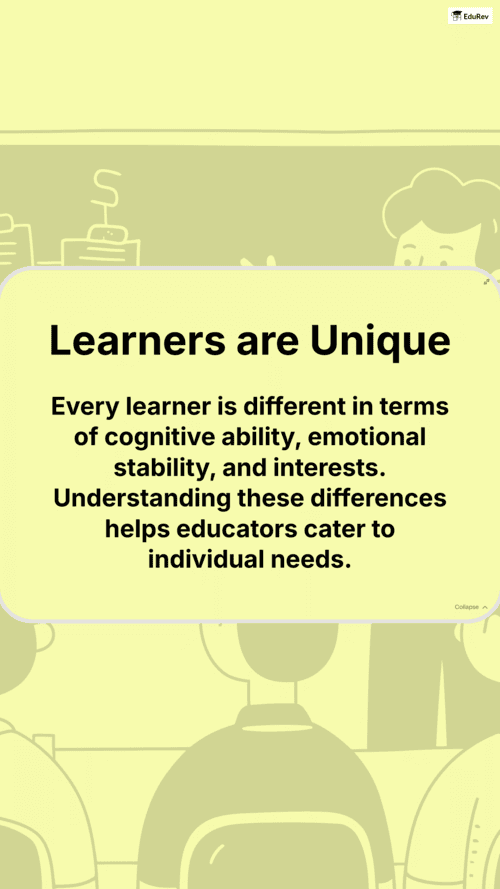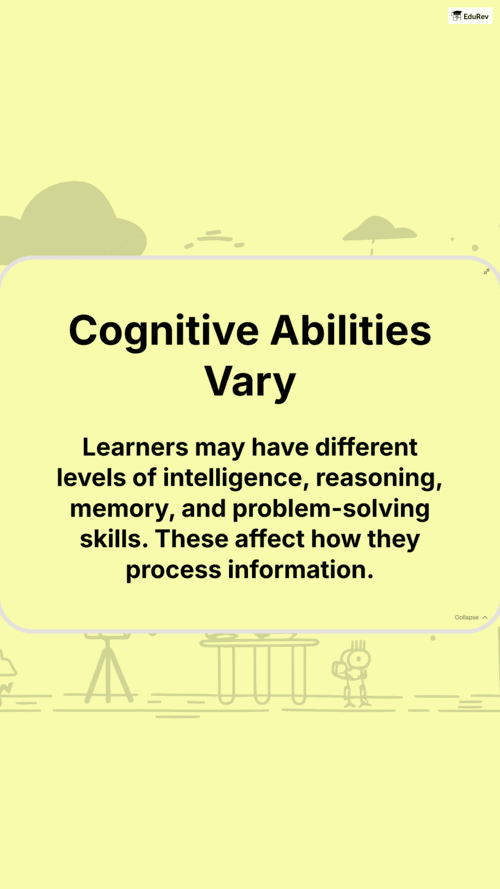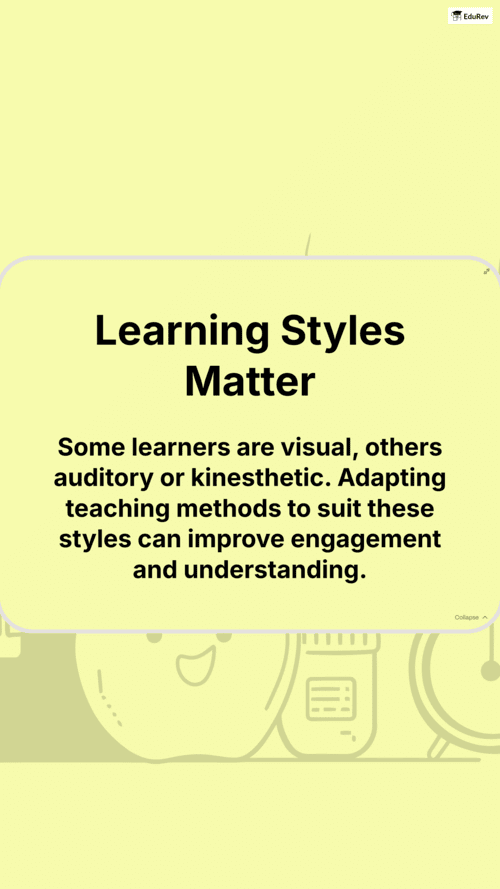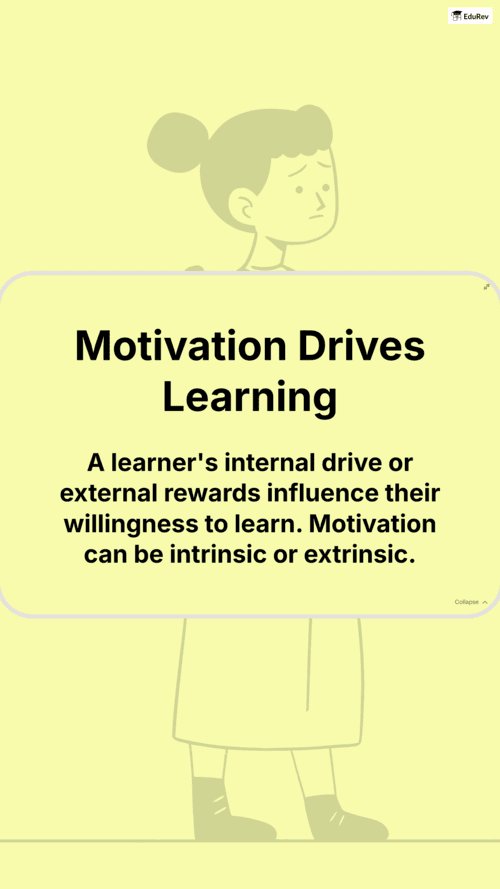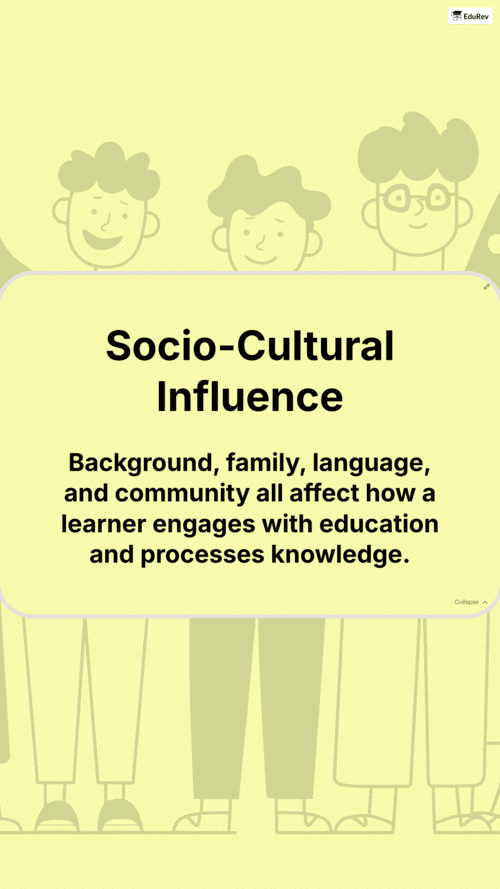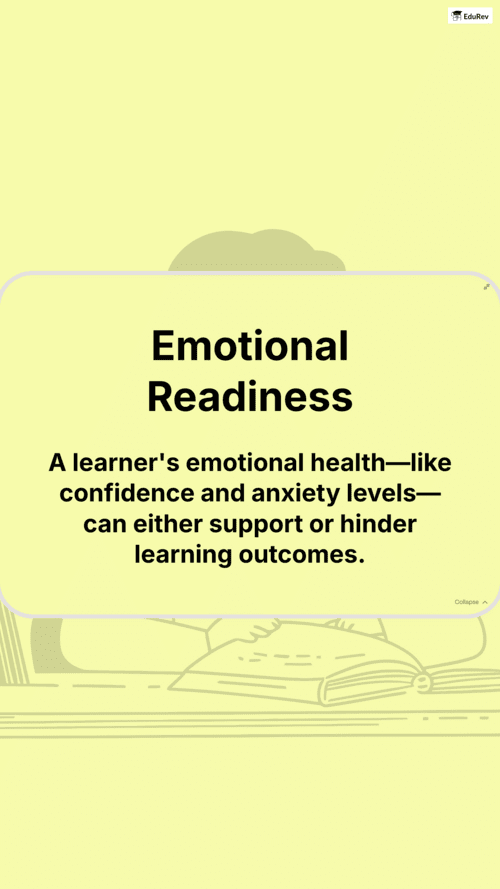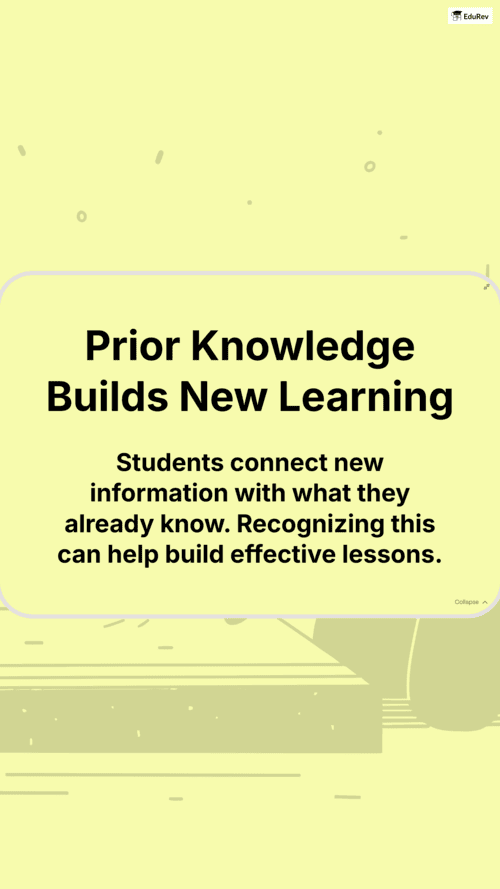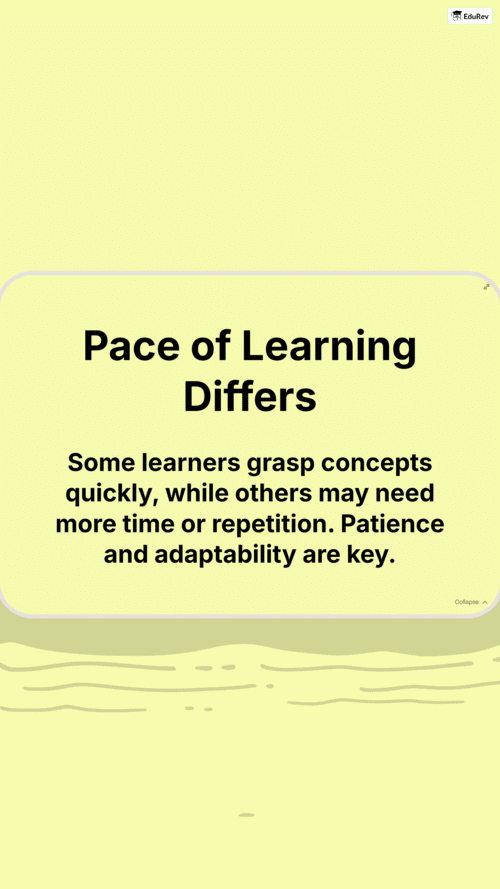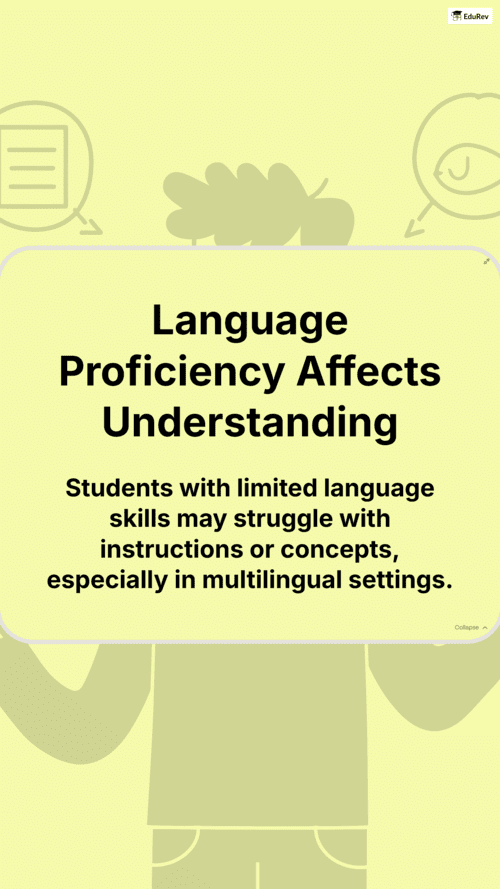 Unlock all Flashcards with EduRev Infinity Plan Starting from @ ₹99 only
|
B.Ed Entrance Exam > Teaching Aptitude for Teaching Exam > Flashcards: Learner's Characteristics
|
27 videos|45 docs|11 tests
|
FAQs on Flashcards: Learner's Characteristics Flashcard - Teaching Aptitude for Teaching Exam - B.Ed Entrance
| 1. What are learner's characteristics and why are they important in education? |  |
Ans.Learner's characteristics refer to the unique attributes, preferences, and behaviors of individuals that affect their learning processes. These can include factors such as age, learning style, motivation, prior knowledge, and cultural background. Understanding these characteristics is crucial in education as it helps educators tailor their teaching methods to meet the diverse needs of students, ultimately leading to more effective learning outcomes.
| 2. How can understanding learner's characteristics improve teaching strategies? |  |
Ans.Understanding learner's characteristics allows educators to customize their teaching strategies to align with students' preferences and strengths. For instance, recognizing that some students are visual learners while others prefer auditory information can lead to varied instructional techniques. This differentiation enhances engagement, comprehension, and retention of material, making the learning experience more productive.
| 3. What role does motivation play in learner's characteristics? |  |
Ans.Motivation is a critical component of learner's characteristics as it influences the level of effort and persistence a student exhibits in their learning journey. High motivation can lead to better engagement and achievement, while low motivation may result in disengagement. Educators can foster motivation by creating relevant, challenging, and supportive learning environments that resonate with students' interests and goals.
| 4. How do cultural backgrounds affect learner's characteristics? |  |
Ans.Cultural backgrounds significantly shape learner's characteristics, influencing values, beliefs, and approaches to learning. Students from different cultures may have varying expectations regarding classroom behavior, communication styles, and relationships with authority figures. Educators must be culturally responsive, recognizing and respecting these differences to create an inclusive learning environment that accommodates all students.
| 5. What are some common learning styles and how do they relate to learner's characteristics? |  |
Ans.Common learning styles include visual, auditory, reading/writing, and kinesthetic. Each style represents a preference for how individuals best absorb and process information. Recognizing these styles as part of learner's characteristics allows educators to implement diverse teaching methods—such as using visual aids, discussions, written assignments, or hands-on activities—to cater to various learners, thereby enhancing overall educational effectiveness.
Related Searches




